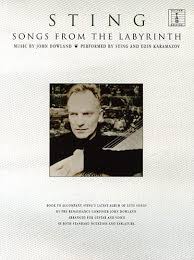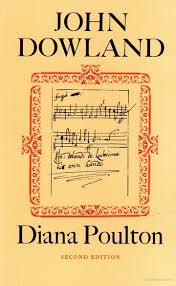Come join us now, and enjoy playing your beloved music and browse through great scores of every level and styles!
Can’t find the songbook you’re looking for? Please, email us at: sheetmusiclibrarypdf@gmail.com We’d like to help you!
Table of Contents
Sting and Edin Karamazov – The Music of John Dowland, Paris, October 26, 2006.

Best Sheet Music download from our Library.
Please, subscribe to our Library.
If you are already a subscriber, please, check our NEW SCORES’ page every month for new sheet music. THANK YOU!
MAISON DE LA RADIO ET DE LA MUSIQUE – RADIO FRANCE
00:30 Walsingham (lute solo) – 0’34
01:05 Letter Part I (by John Downland) – 0’38
01:45 Flow My Tears – 4’40
06:31 The Lowest Trees Have Tops – 2’01
08:52 Letter Part II – 0’37
09:30 The Most High and Mighty Christianus the Fourth, King of Denmark, His Galliard (also known as “The Battle Galliard”) – 2’25
13:05 Can She Excuse My Wrongs – 2’39
16:09 Letter Part III – 0’51
17:02 Fine Knacks For Ladies [Second Booke of Songes, 1600, n° 12] – 2’09
19:37 Letter Part IV – 0’22
20:00 Fantasy – 2’28
22:28 Come Heavy Sleep – 3’43
26:22 Letter Part V – 0’07
26:30 Le Rossignol – 2’26
28:57 Come Again – 2’44
32:42 Have You Seen The Bright Lily Grow – 2’30
36:27 Letter Part VI – 0’42
37:11 Weep You No More Sad Fountains – 2’33
40:00 Clear or Cloudy – 2’30
43:21 Letter Part VII – 0’38
43:59 In Darkness We Dwell [A musical banquet, 1610, n° 10] – 3’45
49:07 Fields of gold (Sting) – 3’07
52:37 Message In A Bottle (Sting) – 5’23
59:03 Fine Knacks For Ladies [Second Booke of Songes, 1600, n° 12] – 2’09
Sting (vocal, lute)
Edin Karamazov (lute, archlute)
Choir Stile Antico
Paris, Maison de la Radio : Salle Olivier Messiaen (Studio 104) – October 26, 2006

Browse in the Library:
Or browse in the categories menus & download the Library Catalog PDF:
“Songs from the Labyrinth” — Sting, John Dowland and the lute revival
Overview.
In October 2006 Sting released Songs from the Labyrinth, a studio album of music by the Elizabethan lutenist–composer John Dowland (c.1563–1626). The record — made with Bosnian lutenist Edin Karamazov and issued on Deutsche Grammophon — presents Dowland’s songs and solo lute pieces in an intimate, historically minded setting, and includes spoken excerpts that place the music in Dowland’s life and times. (Viquipèdia)
Who was John Dowland — and why Sting cared
John Dowland is one of the best-known composers for lute of the late Renaissance: celebrated for melancholic songs such as Flow, My Tears, Come Again and In darkness let me dwell. Dowland’s idiom — close, lyrical melodies with expressive modal harmony — has long appealed to performers and listeners for its emotional directness. (Viquipèdia)
Sting approached Dowland not as a novelty project but as the culmination of a long fascination. He has described Dowland’s music as “the music of self-reflection,” and said that over some 20–25 years he’d been drawn to the composer’s melodic craft and its emotional palette. For Sting, Dowland’s songs are “pop songs” of their day — concise, memorable, and sung close to the ear rather than in operatic style — which made them compatible with his own musical sensibilities. (Sting.com)
How Sting and Edin Karamazov came together
Edin Karamazov was already an accomplished lutenist and early-music specialist when Sting discovered his playing. Karamazov saw an immediate affinity between Sting and Dowland — vocally and temperamentally — and invited Sting to sing Dowland’s repertoire. The collaboration grew organically: Karamazov accompanied and advised on performance practice, played many of the instrumental lute pieces, and co-produced the sessions with Sting. The result was a true duo project rather than a pop star guesting on early-music tracks. (Sting.com)
The recording: approach and content
Recorded and produced with restraint and historical awareness, Songs from the Labyrinth balances solo lute fantasias with voice-and-lute songs. Sting performs the songs in English, often with a plain, close-microphone delivery meant to echo the intimacy of early-seventeenth-century performance. The album also includes brief spoken extracts (letters and notes) to contextualize Dowland’s life as a travelling professional musician. Karamazov supplies the instrumental virtuosity — the lush, ornamented lute accompaniments and the solo fantasies — while Sting contributes a direct, narrative vocal take. (Viquipèdia)
Notable inclusions are Flow, My Tears, Come Again and In Darkness Let Me Dwell. Some editions of the release add live tracks (including lute arrangements of Sting songs) and a DVD documentary, The Journey and the Labyrinth, which traces the project’s research and performance arc. (Viquipèdia)
Release, reception and legacy
Songs from the Labyrinth was released on Deutsche Grammophon and entered the UK and US charts (modest commercial placement for a major pop artist, but significant for a classical/early-music record). Critics were generally intrigued: many praised the sincerity of Sting’s vocal approach and Karamazov’s musicianship, though some early-music purists debated aspects of style and ornamentation. The project succeeded in bringing Dowland to a wider audience and in sparking renewed interest in lute song among non-specialist listeners. (Viquipèdia)
Since its first issue the album has seen expanded and anniversary editions that collected extra tracks and the documentary; Sting and Karamazov also performed Dowland programs live, reinforcing the album’s role as both research project and concert repertory. (Viquipèdia)
Why the collaboration matters
A few reasons this album is more than a curiosity:
- Cross-genre curiosity turned serious study: Sting treated Dowland as a sustained artistic obsession rather than a one-off experiment, investing time learning the idiom and vocal style. (Sting.com)
- Musical complementarity: Karamazov’s early-music expertise gave the project authenticity and technical depth while Sting’s voice and interpretive instincts opened the songs to listeners who might not otherwise seek Renaissance lute music. (Sting.com)
- Cultural bridge: The album helped shift some Dowland performances from academic recital halls into more mainstream awareness, proving that Renaissance song can still speak directly to modern emotion and storytelling. (The Guardian)
Listening tips
If you want to dive in:
- Start with Flow, My Tears and Come Again to hear Dowland’s best-known songs rendered with intimate phrasing.
- Try the DVD documentary (or the “Journey and the Labyrinth” notes) to appreciate the historical context Sting and Karamazov used when crafting the performances. (Viquipèdia)
Further reading / sources used for this article: Sting’s official site and discography notes, the Songs from the Labyrinth album page and editions, interviews with Edin Karamazov and Sting, and contemporary reviews (e.g., The Guardian). (Sting.com)
Search your favorite sheet music in the Sheet Music Catalog
Musical analysis
Musical analysis of John Dowland’s “Flow, My Tears” (as performed by Sting and Edin Karamazov on Songs from the Labyrinth), focusing on harmony, text setting, and lute accompaniment:
1. Context and form
“Flow, My Tears” (originally Lachrimae pavane) is one of Dowland’s most famous ayres (lute songs).
It’s written in minor mode (roughly A Aeolian in modern terms) and is based on Dowland’s instrumental pavane Lachrimae, a slow, melancholic dance in duple meter.
The piece has a strophic form — each of the song’s verses shares the same music, reinforcing the reflective and obsessive emotional tone of lamentation.
2. Melody and text setting
The song opens with the iconic descending four-note motif (A–G–F–E), representing falling tears.
This motif immediately embodies the word “Flow” in text painting — a literal musical depiction of weeping.
Dowland’s vocal line:
- Uses stepwise motion and narrow intervals, mirroring speech rhythm and emotional restraint.
- Avoids large leaps, preserving an inward, sighing quality.
- Emphasizes cadences that coincide with emotional words (“tears,” “woe,” “die,” “sorrow”).
In Sting’s performance, the phrasing is conversational, with soft dynamics and clear diction, highlighting the melancholy poetry. He sings with minimal vibrato and modern English pronunciation, allowing Dowland’s melodic contour to carry the emotion.
3. Harmony
Though harmonically simple by modern standards, Dowland’s use of modal inflection and chromatic tension gives remarkable expressiveness.
- The piece is centered on A minor (Aeolian), with cadences alternating between E (dominant) and A (finalis).
- Dowland often uses suspensions and false relations (cross-relations between voices like F♮ and F♯) to color the harmony with bittersweet tension — an Elizabethan hallmark of sadness.
- The descending bass lines mirror the melodic fall, creating an overall downward harmonic gravity.
- Brief touches of G major and D minor (via modal mixture) provide relief before the music returns to A minor.
In Karamazov’s lute realization, these harmonic movements are clarified through inner-voice motion, with the lute sustaining suspensions and carefully voiced chords.
4. Lute accompaniment
Dowland himself wrote the lute part with exquisite counterpoint.
In Songs from the Labyrinth, Karamazov uses a Renaissance lute with gut strings and historically informed fingering:
- The accompaniment alternates between broken chords (arpeggiations) and imitative counter-melodies, never merely strumming.
- The texture is transparent, leaving space for Sting’s voice.
- The lute occasionally echoes or anticipates the vocal motif, symbolizing the echo of lament — a “dialogue” between singer and instrument.
Karamazov maintains Dowland’s rhythmic restraint, keeping the pavane’s stately pulse, but allows subtle rubato to match Sting’s breathing and phrasing.
5. Expression and interpretation
Sting and Karamazov approach the song not as a museum piece but as a living lament.
Their performance uses modern expressivity within historically accurate limits — a fusion of authenticity and intimacy.
The melancholy tone, delicate dissonances, and descending tears motif combine to make “Flow, My Tears” one of the earliest masterpieces of emotional song writing in Western music — a direct ancestor to later art songs and even contemporary ballads.
